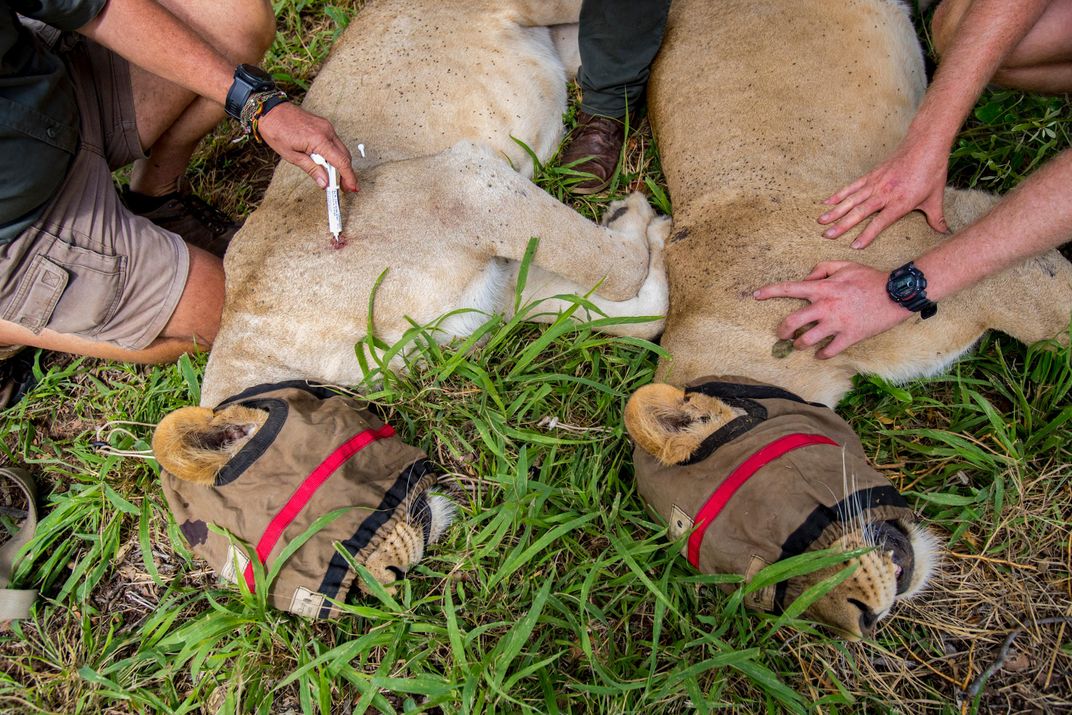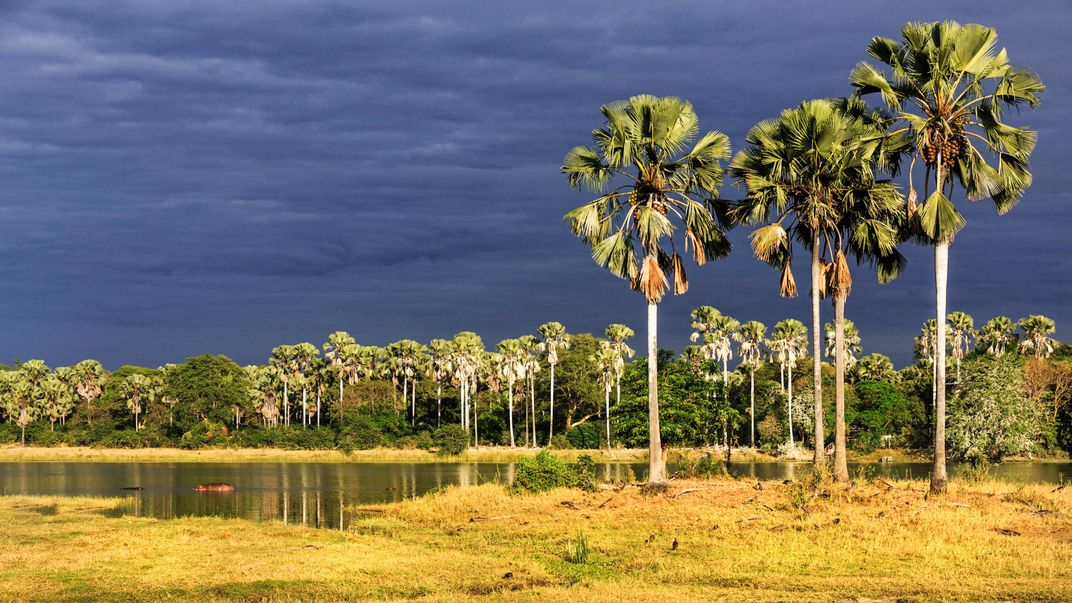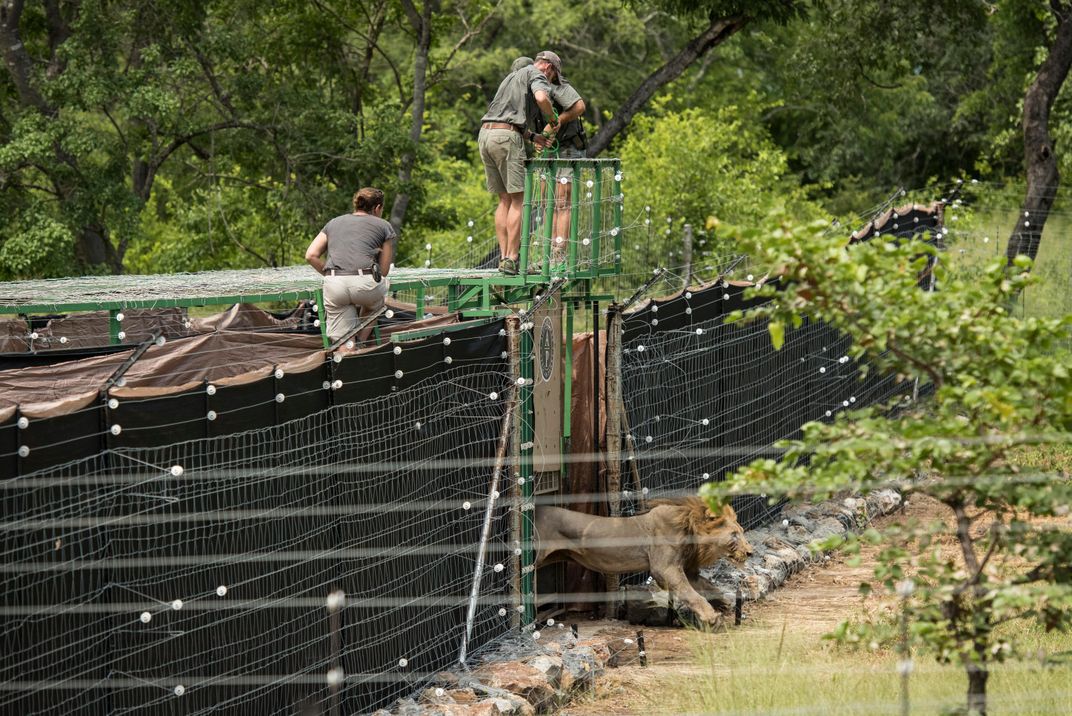Lions Are Coming Back to Southern Malawi, Where They Haven’t Been Seen for Decades
The apex predators have been returned to Malawi’s Liwonde National Park in an effort to restore the ecosystem and boost tourism
/https://tf-cmsv2-smithsonianmag-media.s3.amazonaws.com/filer/2a/10/2a10f934-c2c8-4c55-8b54-ed43972aa5ea/female_lion_in_boma_in_liwonde_credit_frank_weitzer.jpg)
For the first time in decades, breeding lions can be seen in Malawi’s Liwonde National Park. On Wednesday, the park’s resident conservationists opened the gates of Liwonde’s temporary enclosures— where nine lions spent the last few weeks acclimating—sending them into new lives in the park.
“Their time in bomas, or enclosures, helped these lions bond and begin forming cohesive prides,” says Liwonde’s park manager, Craig Reid. “Our hope is that they will form two separate prides, which will foster greater diversity and demographic interactions that naturally take place between lion prides.”
All but two of the transplants came from South Africa, where they would have lived out their days had it not been for one NGO’s ambitious plan to revive entire ecosystems.
Johannesburg-based African Parks is best known for moving 500 elephants from southern Malawi to the country’s north in 2016, but the aptly named 500 Elephants initiative extends beyond pachyderms. The NGO has been working in Malawi since 2003, when it took over management of the Majete Wildlife Reserve, then a wildlife wasteland. Majete has morphed into a destination that boasts 12,000+ animals, including the “big five:” lions, elephants, Cape buffalo, leopards, and rhinos. It now serves as a model for other African parks that need a boost.
Liwonde is one of them. Like Majete, Malawi’s small southern park lost much of its wildlife to poaching, hunting, and habitat loss. Before African Parks reintroduced cheetahs to Liwonde last year, large predators hadn’t been seen in the area for years. The last lion sighting was four years ago, but it’s been decades since Liwonde housed a breeding population of Africa’s biggest cat.
Bringing back predators is simpler than moving much larger elephants or rhinos, but predator dynamics bring challenges of their own. Every region has a dominance pyramid, and in Africa lions reign supreme while cheetahs are at the bottom of the predator ladder. Because of this, African Parks and its partners had to carefully choose which cheetahs to bring into Liwonde.
“All of the cheetahs introduced to Liwonde were raised on lion reserves and are, therefore, lion savvy,” explains Vincent van der Merwe, who selected the cheetahs sent to Liwonde last year in his capacity as cheetah coordinator for the Endangered Wildlife Trust's Carnivore Conservation Programme. “This is essential since lions are the principal killers of cheetahs in fenced areas.”
Large-scale animal translocations can go dangerously awry, as Kenya learned earlier this summer when ten endangered black rhinos died after the Kenya Wildlife Service attempted to move them between two national parks.
High costs and high risk might leave some asking, “Why bother?” But the presence of nine lions in Liwonde actually supports animals, people, and the environment.

Wildlife watching is said to represent 80 percent of the total annual sales of African trips, and the African safari business is a $34 billion industry. Malawi is primed to become one of sub-Saharan Africa’s top destinations, with publications like Forbes and Vogue calling the small country one of their 2018 travel hotspots.
Having “charismatic megafauna” back will undoubtedly boost wildlife tourism, and big cats are particularly good at attracting tourists. Researchers found that reintroducing lions to a South African national park would boost the regional economy by $9 million a year. In one Kenyan national park, a single lion equated to annual tourism revenues of $27,000; in South Africa, an individual leopard was worth $50,000 per year.
“The reintroduction of lions to Liwonde National Park helps the park achieve “Big 5” status, which Malawi needs since the country only has one other Big 5 area (Majete),” says Margaux de Rooy, the owner/director of Robin Pope Safaris. “We see this as another step towards establishing the country as a premier safari destination.”

But lions, leopards, and cheetahs do more than lure in tourists: They and their fellow apex predators keep ecosystems healthy. Apex predators exert control over herbivores, which prevents prey animals, like antelope, from overgrazing land and becoming so populous that animals starve to death. At the same time, lions and other top-tier predators prevent mid-ranking predators, like olive baboons, from decimating prey species. Top-down predator management implicates a wide range of plants and animals, and, without apex predators, entire ecosystems can collapse.
Ecologist and lion expert Craig Packer explains, “In the absence of large predators, there is some risk that prey populations will overgraze their habitat, whereas the return of the lions will likely cause herbivores to avoid high-risk areas, thus allowing more vegetative growth near river courses, for example.” According to Packer, the return of lions also reflects broader conservation success. “Maintaining a healthy lion population means that the managers are succeeding at multiple levels: lions can only thrive if there are enough prey which, in turn, are feeding on healthy pastures.”
Some reserves also need to rehome their animals. Like the 500 elephants African Parks redistributed, reserves sometimes reach a point where they can’t sustain any more members of a particular species after reaching what’s called “carrying capacity.” Lions are prolific breeders, so just as zoos often trade animals to ensure healthy offspring, reserves and parks that have great success with breeding lions sometimes need to unload some of their cats. The translocations that follow— and the occasional swapping of animals—ensures strong genetic diversity.
For some people, conservation is a moral imperative. They believe that biodiversity should be preserved and enjoyed, not just for the benefit it brings people but because it has intrinsic value. People living alongside them often see lions as threats or pests, but some conservationists would argue that these communities have a moral responsibility to protect lions for everyone’s real or theoretical benefit.

Lions, in particular, have enjoyed widespread cultural significance for thousands of years and are globally revered as symbols of strength, which could be seen to increase their value. Philosopher Kathleen Dean Moore views the moral imperative differently, “I would argue that the obligation to protect the great beasts is an obligation to the animals themselves, a responsibility to respect living beings and to honor the animals’ own urgent striving for on-going life.”
That desperate striving increasingly requires help from people, as the African Parks model demonstrates. For some, conservation interventions that require trains, plains, and automobiles seem unnatural, but the species declines that inspired them are equally man-made.
The nine lions of Liwonde are now able to roam free among the park's more than 200 preserved square miles, living, hunting, and—hopefully—breeding as they would in the true wild. This is African Parks' ambitious goal. But as of Wednesday, the beasts had tamer desires. They cautiously left their enclosure, began feeding on a carcass staff had left to entice them out, and then, as lions are wont to do, settled down for a catnap.